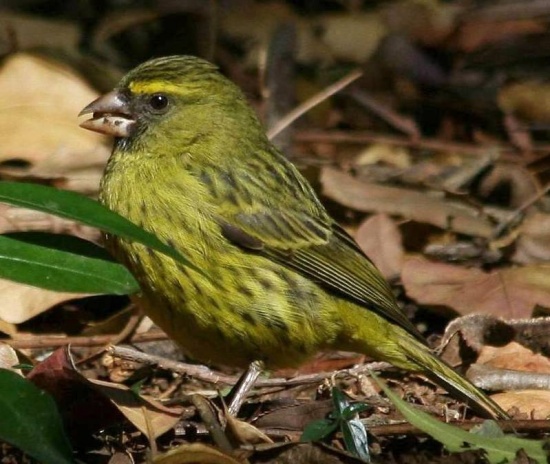m |
(changed image) |
||
| Line 1: | Line 1: | ||
;Serinus scotops | ;Serinus scotops | ||
| − | [[Image: | + | [[Image:2007_08_26_Forest_Canary.jpg|thumb|550px|right|Male Forest Canary<br />Photo by Alan Manson<br />Photo taken: Queen Elizabeth Park, Pietermaritzburg, South Africa.]] |
''Crithagra scotops'' | ''Crithagra scotops'' | ||
Revision as of 05:48, 21 September 2007
- Serinus scotops
Crithagra scotops
Identification
Length 12-13 cm, mass 15 g. Above olive green with brown streaks. Black face mask extending from lores to chin, eyebrow yellow. Below yellow with green wash and olive streaks on breast and flanks. Face mask and streaks below are diagnostic. Males have a yellow throat patch, which is absent in the females. Females are duller than males, greyer on the face, more heavily streaked below, and the yellow eyebrow is not as broad.
Distribution
Eastern and southern South Africa, eastern Lesotho and western Swaziland.
Taxonomy
Three subspecies based on plumage coloration: C. s. scotops from low-altitude (eastern) KwaZulu-Natal and coastal Eastern Cape; C. s. transvaalensis Afromontane forests of Limpopo Province and Mpumalanga, breast darker and more strongly streaked than nominate; C. s. umbrosa Coastal forests of southern Western Cape and Afromontane forests of Eastern Cape, KwaZulu-Natal (>1000 m), upper parts darker green than nominate, underparts duller and eyebrow shorter.
Habitat
Forest, coastal thicket, tall shrubland and Protea woodland, orchards, wooded gardens, and plantations.
Behaviour
Inconspicuous, foraging in small groups or pairs in the mid to upper canopy, forest margin vegetation or on ground. Food includes small seeds, fruit, flowers and leaves.
References
Hockey PAR, Dean WRJ & Ryan PG (eds) 2005. Robert's Birds of Southern Africa, 7th edition. Cape Town: John Voelcker Bird Book Fund. ISBN 0620340533





